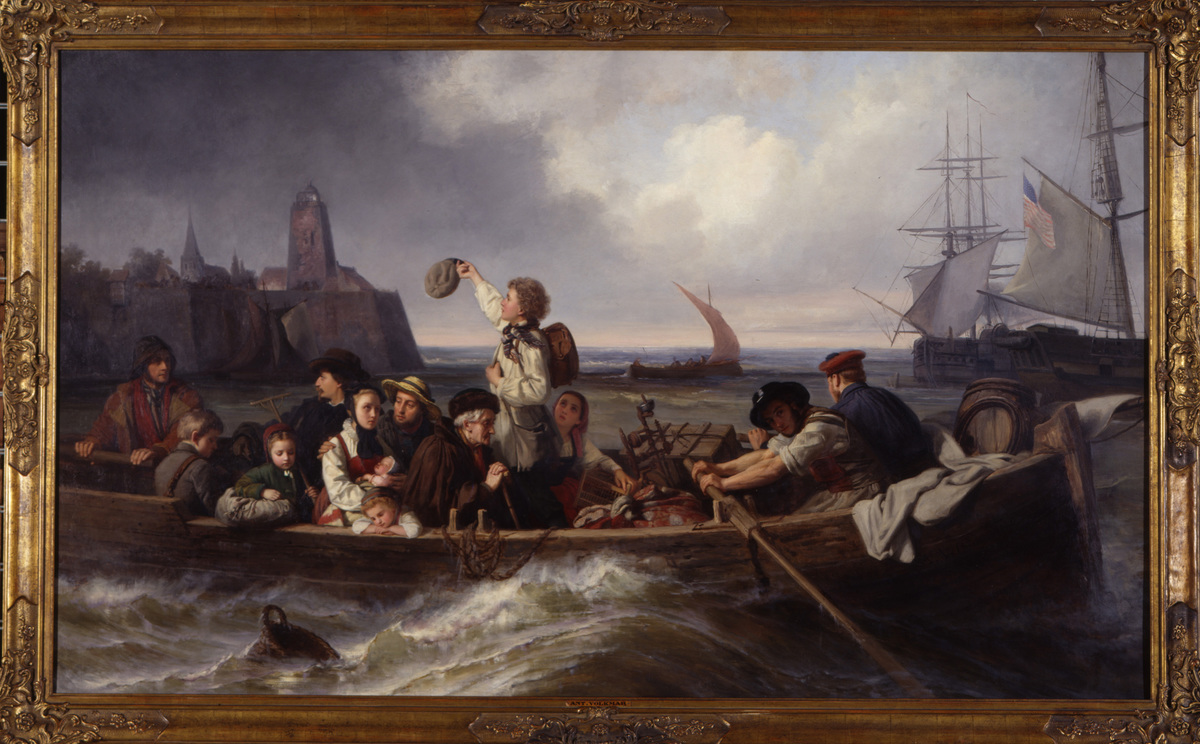Source

Source: Deutsches Historisches Museum, Inv.-Nr. 1991/3264.
Antonie Volkmar (1827–1903) was a German-Jewish painter from Berlin, a female artist in an era when art was an overwhelmingly male preserve. She studied in Berlin and Paris and would later paint in Rome as well. In the second half of the nineteenth century, when Volkmar was most active, portraits and genre scenes from daily life were the most acceptable forms of expression for female artists. This image of Germans departing for the New World fell squarely into the latter category. Emigration was a topic that allowed Volkmar to explore emotions and family life, again, more permissible for females within the prevailing gender norms. At the same time, however, emigration was also a matter of considerable political and historical gravity—a point borne out by the physical dimensions of this painting, which measures more than one by two meters in size. Likewise, the choice of medium—oil painting as opposed to watercolor or pastel—pointed to Volkmar’s intention to create a momentous work. While the dominant figure in the composition is the youth in white who stands up to wave his cap toward the shore in a gesture of farewell, the painting documents the generational span of the emigrants, from a babe in arms to an elderly person. The pervasive mood is one of sadness, as the husband comforts the young mother and as the children stare reflectively down at the boat and the water as they are rowed towards a ship flying the flag of the United States. The direct eye contact between the powerful oarsman and the (ostensibly German) viewer of the scene introduces an element of ambiguity into the image.

Source: Deutsches Historisches Museum, Inv.-Nr. 1991/3264.
© Deutsches Historisches Museum, Berlin